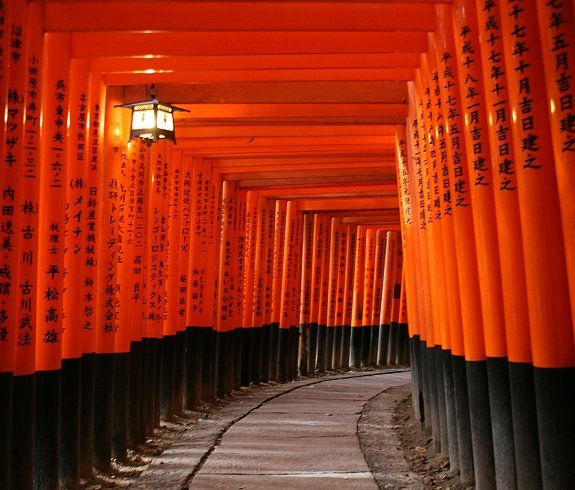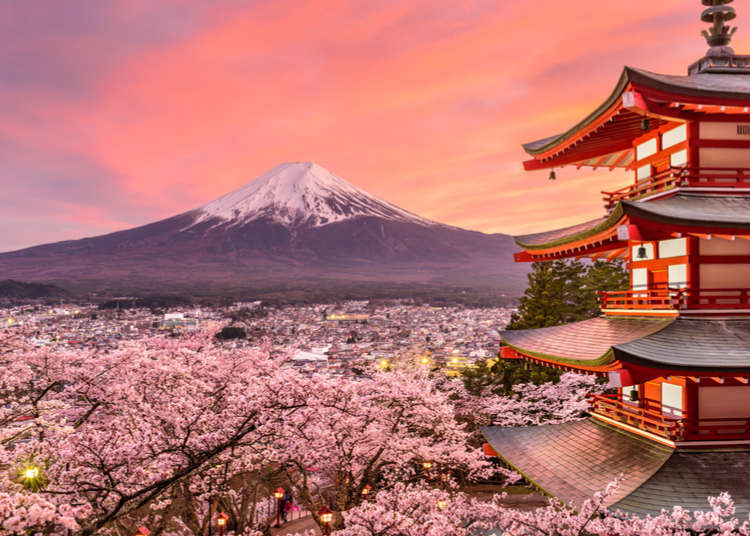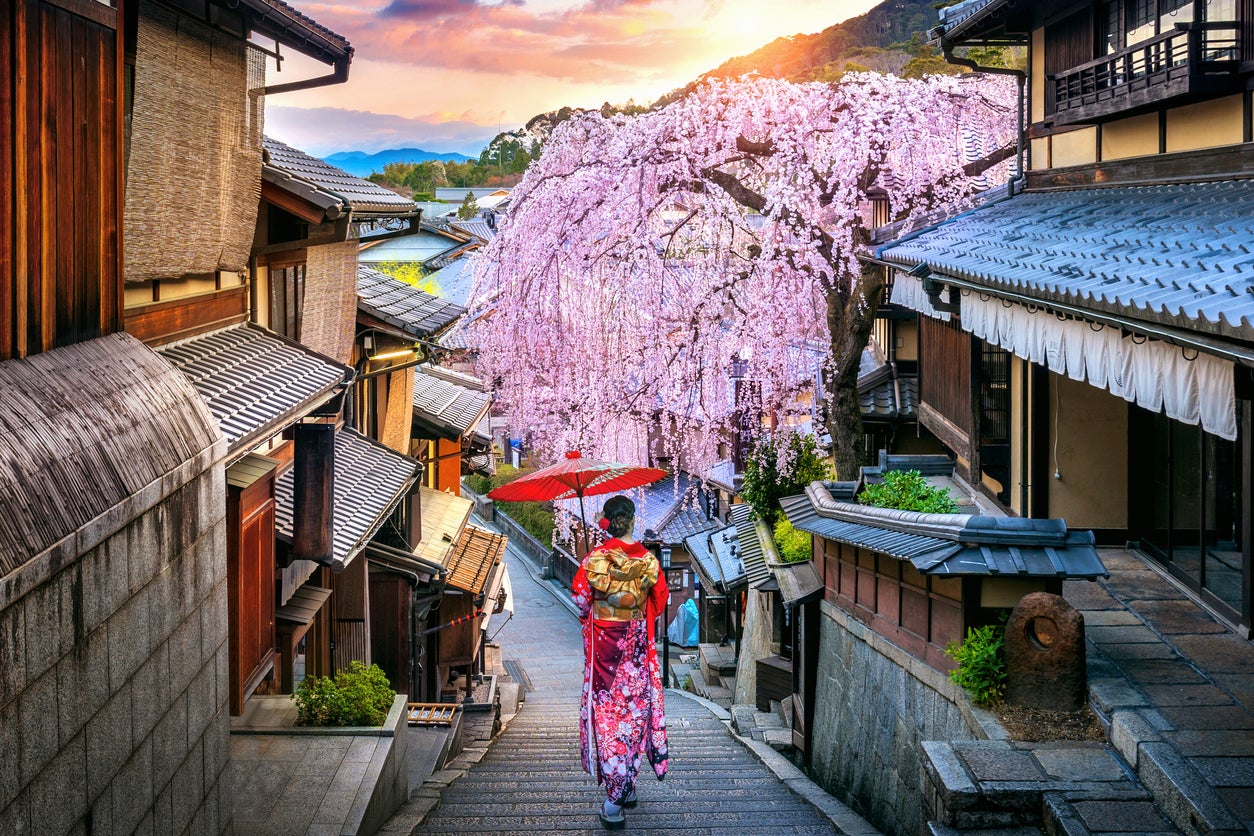Japan boasts a rich culinary landscape that captivates food enthusiasts from around the globe. As you embark on your Japan travel adventures, you’ll discover a vibrant array of flavors, ingredients, and cooking techniques. Each region offers unique specialties, from savory street food to exquisite sushi that highlights culinary artistry. Additionally, the emphasis on seasonality greatly influences Japan’s cuisine, making every meal a delightful experience. Join us on this journey as we explore the delightful world of Japanese food, showcasing the diverse and tantalizing offerings that await.
Win a Free Trip to Japan!
Experience cherry blossoms and ancient temples
Introduction to Japanese Cuisine
Embarking on Japan Travel unveils a culinary landscape that marries tradition with innovation. Japanese cuisine, or "washoku," emphasizes seasonal ingredients, meticulous presentation, and balance, leading to a sensory experience like no other.
Key Characteristics of Japanese Cuisine:
- Fresh Ingredients: Local and seasonal produce forms the backbone of many dishes. For instance, spring brings cherry blossoms, while autumn showcases mushrooms.
- Umami Flavor: This fifth taste, often found in miso, soy sauce, and dashi, provides depth and richness. It elevates dishes like sushi and ramen, making them unforgettable.
- Presentation: Japanese food is artfully arranged, emphasizing color, texture, and aesthetics. Each meal becomes a visual masterpiece, showcasing the thoughtfulness behind every dish.
Common Cooking Techniques:
- Grilling: Yakitori and teriyaki highlight the art of grilling, infusing savory flavors while preserving the meat’s tenderness.
- Steaming: Dishes like chawanmushi—savory egg custard—exemplify the delicate nature of steamed food in Japanese dining.
- Fermenting: Essential for flavor and preservation, traditional pickles (tsukemono) and miso are staples that add complexity to meals.
As you dive into Japan’s culinary scene, you’ll find that every dish tells a story. This gastronomic adventure not only tantalizes your taste buds but also enriches your understanding of Japan’s culture and history. Embrace Japan Travel, and let the exquisite cuisine guide your journey!

Regional Specialties of Japan
Japan boasts a rich tapestry of regional specialties, each offering unique flavors and culinary experiences that reflect local traditions and ingredients. When embarking on Japan Travel, foodies can explore these specialties to truly appreciate the diverse palette that the country offers.
Key Regional Specialties
- Hokkaido: Known for its dairy products, Hokkaido is famous for fresh seafood, corn, and ramen. Enjoy the rich flavors of Miso Ramen as you savor local seafood dishes such as Ika (squid) sashimi.
- Osaka: Renowned as the "Kitchen of Japan," Osaka is the birthplace of Takoyaki (octopus balls) and Okonomiyaki (savory pancakes). Both dishes offer a delightful combination of textures and flavors.
- Kyoto: Embrace Kaiseki, a multi-course dining experience that perfectly highlights seasonal ingredients. This traditional cuisine utilizes unique techniques and presentation that showcases art in every bite.
- Okinawa: Experience the subtropical flavors of Okinawa, where dishes like Goya Champuru (stir-fried bitter melon) highlight local ingredients known for their health benefits and distinct taste.
Why Regional Specialties Matter
- Cultural Insight: Each dish represents the history and culture of its region.
- Seasonality: Ingredients change based on the season, offering a fresh experience during your Japan Travel.
- Authenticity: Taste the authentic flavors that locals enjoy, giving you a deeper connection to Japanese culture.
In summary, regional specialties of Japan present an unmissable opportunity to enhance your culinary journey. From the vibrant flavors of Osaka street food to the refined elegance of Kyoto kaiseki, every region tells a story on your Japan Travel adventure.
Street Food Adventures
Japan’s street food scene offers a thrilling adventure for food lovers. When you think about Japan Travel, delectable street food options are at the forefront. The vibrant streets are a treasure trove of local delicacies and unique flavors. Here are some must-try street foods that you can savor while exploring Japan:
- Takoyaki: These savory octopus balls are a popular street snack. Vendors prepare them fresh on-site, serving them hot, drizzled with takoyaki sauce, and topped with bonito flakes.
- Okonomiyaki: Often referred to as Japanese savory pancakes, okonomiyaki combines a variety of ingredients and is grilled to perfection. Each region has its unique twist, making every bite an exploration.
- Yaki Imo: Roasted sweet potatoes, which are a favorite during colder months, offer a warm and comforting snack that highlights Japan’s love for simple, natural flavors.
- Yakitori: These skewered grilled chicken pieces, seasoned with salt or tare sauce, are available at many street stalls. Enjoy them with a side of beer for an authentic experience.
Comparison of Popular Street Foods
| Street Food | Main Ingredient | Typical Price | Best City for Experience |
|---|---|---|---|
| Takoyaki | Octopus | ¥400-¥1000 | Osaka |
| Okonomiyaki | Cabbage/Flour | ¥800-¥2000 | Hiroshima |
| Yaki Imo | Sweet Potato | ¥200-¥500 | Various |
| Yakitori | Chicken | ¥150-¥500 | Tokyo |
Embarking on a Japan Travel adventure through its street food not only satisfies your taste buds but also enhances your understanding of Japanese culture. So grab your chopsticks and explore the delectable offerings that await you on the bustling streets of Japan!
Traditional Japanese Breakfast
When it comes to Japan Travel, one of the most delightful experiences is savoring a traditional Japanese breakfast. This meal, known as "Asa-gohan," showcases a harmonious blend of flavors and nutritional balance that sets the tone for the day.
Elements of a Traditional Japanese Breakfast:
- Steamed Rice: A staple, often served fresh and fluffy, acting as the base of the meal.
- Miso Soup: Warm and comforting, this soup typically features tofu and seaweed, promoting wellbeing.
- Grilled Fish: Usually, a small portion of fish like salmon or mackerel adds protein and richness to the dish.
- Pickles (Tsukemono): These provide a burst of flavor and vibrant color, often made from seasonal vegetables.
- Eggs: Whether it’s a soft-boiled egg or Tamago (sweet Japanese omelet), eggs enhance the meal’s appeal.
Nutritional Benefits:
- Balanced Diet: This breakfast is rich in carbohydrates, protein, and vitamins, making it an ideal way to start the day.
- Seasonal Ingredients: Many dishes reflect the seasonality of ingredients encountered during Japan travel.
Comparison with Western Breakfast:
| Aspect | Traditional Japanese Breakfast | Western Breakfast |
|---|---|---|
| Main Component | Steamed Rice | Bread/Cereal |
| Protein Source | Grilled Fish | Bacon/Sausage/Eggs |
| Soup/Side Dishes | Miso Soup/Pickles | Hashbrowns/Fruit |
| Flavor Profile | Subtle and umami | Sweet or savory |
In essence, indulging in a traditional Japanese breakfast offers not just a meal, but a culturally enriching experience that enhances your appreciation of Japan’s diverse culinary landscape.

Sushi: A Culinary Art
Sushi stands as one of the most iconic dishes of Japanese cuisine, seamlessly blending art and flavor. When embarking on your Japan Travel adventure, indulging in authentic sushi is an essential experience. Let’s explore the intricacies of this culinary art.
Types of Sushi to Savor:
- Nigiri: Hand-formed rice topped with a slice of fish, often brushed with soy sauce.
- Maki: Rolled sushi featuring rice and fillings, wrapped in seaweed.
- Sashimi: Thinly sliced raw fish, served without rice, showcasing the fish’s natural flavors.
Why Sushi is an Art Form:
- Skill: Sushi chefs undergo years of training to perfect their craft, mastering techniques like rice seasoning and fish selection.
- Presentation: Sushi dishes are artistically arranged, focusing on color, shape, and balance, creating a feast for both the eyes and the palate.
- Seasonality: Freshness matters! Chefs select fish and ingredients based on the season, ensuring a unique dining experience throughout the year.
Top Sushi Destinations in Japan:
| Location | Specialty | Experience |
|---|---|---|
| Tokyo | Edomae Sushi | Traditional sushi bars |
| Osaka | Conveyor Belt Sushi | Fun and casual dining |
| Sapporo | Salmon & Seafood | Fresh catches from markets |
Whether you prefer a refined sushi restaurant or a casual street-side vendor, consider indulging during your Japan Travel. This delectable journey into sushi reveals the elegance and tradition that define Japanese culinary artistry.
Ramen: Exploring the Noodle Culture
Ramen, a beloved staple of Japanese cuisine, embodies the rich culture and artistry of Japan Travel. Originating from Chinese wheat noodles, ramen has evolved into its unique form, showcasing regional variations and flavors that capture the essence of Japan.
Key Components of Ramen:
-
Broth: Ramen broths vary widely, influencing the overall taste. Common types include:
- Shoyu (soy sauce)
- Shio (salt)
- Miso
- Ton棿ku (pork bone)
-
Noodles: Noodle thickness and texture also differ:
- Thin: Often found in Tokyo-style ramen
- Thick: Common in Nagoya or Sapporo ramen
-
Toppings: Ramen toppings enhance flavor and presentation:
- Chashu (braised pork)
- Menma (bamboo shoots)
- Negi (green onions)
- Nori (seaweed)
Regional Ramen Styles:
| Region | Broth Type | Noodle Style | Notable Toppings |
|---|---|---|---|
| Tokyo | Shoyu | Thin | Chashu, Menma |
| Sapporo | Miso | Thick | Corn, Butter |
| Hakata | Tonkotsu | Thin | Chashu, Soft-boiled egg |
As you embark on your Japan Travel journey, indulging in ramen offers an intimate glimpse into local flavors and culinary traditions. Don’t miss out on visiting specialized shops, where ramen chefs skillfully prepare bowls filled with heritage and passion. Whether you prefer the comforting warmth of tonkotsu or the savory depth of miso, every bowl tells a story, making ramen a quintessential experience in Japan.
The Impact of Seasonality on Ingredients
One of the most fascinating aspects of Japan Travel is the emphasis on seasonality in its culinary scene. Japanese cuisine thrives on the concept of "shun," which refers to the peak season when ingredients are at their most flavorful and nutritious. Here’s how seasonality plays a vital role in Japanese dishes:
- Freshness and Flavor: Chefs prioritize seasonal produce to create vibrant, delicious meals. For example, spring brings sakura (cherry blossoms) and tender vegetables, while winter offers hearty root vegetables and seafood caught at their best.
-
Regional Variations: Different regions in Japan celebrate their own seasonal specialties. For instance:
- Hokkaido: Known for its sweet corn and rich seafood during the summer.
- Kyoto: Offers exquisite kyo-yasai (Kyoto vegetables) in late fall.
- Cultural Significance: Each season introduces unique foods celebrated in festivals and traditional meals. For example, mochi rice cakes made during new year’s celebrations symbolize good fortune.
Comparison Table: Seasonal Ingredients in Japan
| Season | Highlights | Popular Dishes |
|---|---|---|
| Spring | Sakura, bamboo shoots | Sakura mochi, takenoko (bamboo shoot) rice |
| Summer | Tomatoes, watermelons | Hiyashi chuka (cold noodles), sashimi |
| Autumn | Mushrooms, chestnuts | Matsutake rice, chestnut stews |
| Winter | Daikon, mandarins | Nabe (hot pot), daikon salad |
In summary, understanding the impact of seasonality on ingredients enriches your Japan Travel experience, showcasing the country’s dedication to freshness and respect for nature’s cycles.

Desserts and Sweets in Japan
Japan Travel enthusiasts will be delighted to discover the rich variety of desserts and sweets the country offers. Renowned for their exquisite presentation and unique flavors, Japanese desserts perfectly encapsulate the harmony between tradition and innovation. Here are some must-try treats:
- Mochi: A chewy rice cake, often filled with sweetened red bean paste or ice cream. Its delightful texture and versatility make mochi a crowd favorite.
- Dorayaki: These fluffy pancake sandwiches filled with anko (sweet red bean paste) are perfect for a quick snack or dessert. Many variations exist, including custard and matcha.
- Daifuku: Similar to mochi, daifuku consists of a rice flour coating with a sweet filling. You can find interesting flavors like strawberry, matcha, or even cheesecake.
- Matcha Sweets: The bitter and fragrant matcha green tea flavor features prominently in Japanese confections, from cakes to cookies, elevating these treats into a unique culinary experience.
Comparing Popular Japanese Desserts
| Dessert | Key Ingredients | Texture | Popular Occasions |
|---|---|---|---|
| Mochi | Glutinous rice, anko | Chewy | Festivals, tea ceremonies |
| Dorayaki | Pancake batter, anko | Soft | Snacks |
| Daifuku | Rice flour, various fillings | Chewy | Special occasions |
| Matcha Sweets | Matcha powder, various bases | Varies | Anytime treats |
Exploring desserts during your Japan Travel experience adds a delightful sweet note to the culinary journey, highlighting the artistry and culture present in each bite.
Dining Etiquette and Culture
When embarking on Japan travel, understanding the dining etiquette and culture is crucial for a respectful and enjoyable experience. Japanese dining customs reflect the nation’s deep respect for food and tradition. Here are some essential points to consider:
- Use of Chopsticks: Avoid sticking chopsticks upright in a bowl of rice, as it resembles funeral rites. Instead, rest them on a chopstick holder or across your plate when not in use.
- Saying Itadakimasu: Before a meal, it is customary to express gratitude by saying "Itadakimasu," which translates to "I humbly receive."
- Eating in Silence: While it may seem quiet, dining in Japan often emphasizes savoring the food. Speaking lightly during meals showcases appreciation for the culinary experience.
- No Tipping: In Japan, tipping can be seen as rude. Exceptional service is part of the experience, so simply showing gratitude verbally suffices.
Table: Key Etiquette Tips
| Etiquette | Description |
|---|---|
| Chopsticks Usage | Rest them on a holder, never upright in rice. |
| Pre-Meal Phrase | Say "Itadakimasu" before eating. |
| Dining Environment | Maintain a quiet, respectful atmosphere. |
| Tipping | Not customary; express gratitude verbally instead. |
By being mindful of these practices, you can enhance your Japan travel experience and enjoy the rich culinary culture with appreciation and respect.
Conclusion: Embracing Japan’s Culinary Diversity
Embarking on a journey through Japan’s culinary landscape enriches your Japan Travel experience, showcasing a vibrant array of flavors and traditions. From the bustling street food stalls to exquisitely crafted sushi and comforting ramen, each dish tells a unique story rooted in the nation’s rich culture.
Here’s why embracing Japan’s culinary diversity enhances your travel:
- Regional Specialties: Each region offers distinct flavors. For example, indulge in Hokkaido’s fresh seafood or savor Kyoto’s delicate kaiseki, demonstrating the importance of local ingredients.
- Culinary Techniques: Witness remarkable cooking styles. Traditional methods, like umami extraction in broth-making, reveal how meticulous craftsmanship elevates simple ingredients to extraordinary heights.
- Cultural Insights: Engaging with local food customs provides invaluable cultural interaction. Understanding dining etiquette, such as using chopsticks correctly and expressing gratitude with “itadakimasu,” enriches your connection with Japanese society.
- Seasonal Highlights: Japanese cuisine celebrates the seasons. Seasonal ingredients are at the heart of many dishes, showcasing the respect for nature and freshness inherent in Japan’s culinary philosophy.
In summary, a deep dive into Japan’s food scene is not just about taste; it’s about connection, history, and art. So, whether you’re traveling for food or culture, embracing Japan’s culinary diversity is a journey worth taking. Happy travels!
Frequently Asked Questions
What are some must-try dishes in Japan?
When exploring Japan’s culinary delights, there are several must-try dishes that shouldn’t be missed. Begin your journey with sushi, particularly Edo-style sushi, which originated in Tokyo. Don’t forget about ramen, a comforting noodle soup with countless regional variations, and okonomiyaki, a savory pancake filled with various ingredients. Tempura, lightly battered and fried seafood or vegetables, is another delight. Lastly, sampling kaiseki, a traditional multi-course meal, will provide a deep dive into Japan’s gastronomic artistry.
How can I experience authentic Japanese cuisine?
To experience authentic Japanese cuisine, it is essential to venture beyond the typical tourist spots. Seek out local izakayas, which are cozy pubs offering a variety of small dishes and drinks. Visiting restaurants that specialize in regional delicacies is also beneficial. Participate in a local food tour or cooking class to engage with chefs and learn about regional ingredients and techniques. Always be open to trying street food, such as yakitori or takoyaki, for a true taste of everyday Japanese life.
What is the best way to learn about Japanese food culture?
Understanding Japanese food culture involves immersing yourself in its rich history and practices. Start by reading books and watching documentaries focused on Japan’s culinary traditions. Joining a local cooking class can provide hands-on experience. Additionally, visiting seafood markets, traditional tea houses, and local producers gives insight into the foundational elements of Japanese food. Engage with locals who can share their stories and perspectives. The more you interact with the culture, the deeper your understanding will become.
Are there vegetarian or vegan options available in Japanese cuisine?
Japanese cuisine offers several vegetarian and vegan options, although they may require a bit more searching. Dishes such as vegetable tempura, tofu, and pickled vegetables are widely available. Look for shojin ryori, which is Buddhist vegetarian cuisine that emphasizes seasonal plant-based ingredients and simple preparation. Many ramen shops now offer vegetable broth options, and sushi establishments might have cucumber rolls or avocado rolls. Asking for no animal products while dining can alert chefs to accommodate your dietary preferences.
What role does presentation play in Japanese culinary experiences?
Presentation holds immense significance in Japanese culinary experiences, as it enhances the pleasure of the meal beyond just the taste. Dishes are often arranged artfully, reflecting the season and paying homage to nature’s beauty. Colors, shapes, and textures are meticulously considered, showcasing a sense of balance and harmony. For example, kaiseki meals highlight this philosophy through a series of courses where every element is presented in a way that delights both the eye and the palate. This cultural focus on aesthetics elevates dining to an art form.
